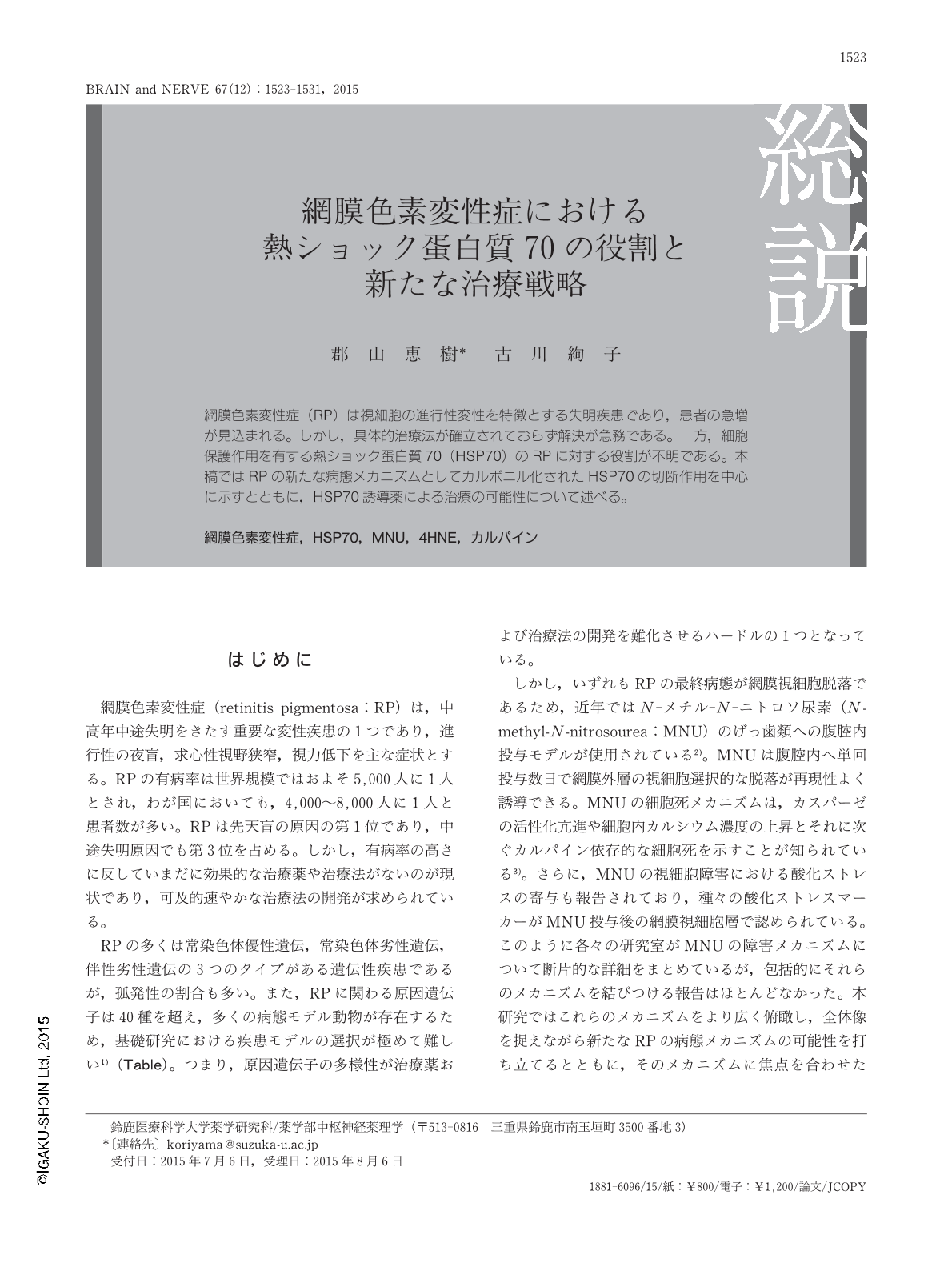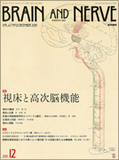Japanese
English
- 有料閲覧
- Abstract 文献概要
- 1ページ目 Look Inside
- 参考文献 Reference
網膜色素変性症(RP)は視細胞の進行性変性を特徴とする失明疾患であり,患者の急増が見込まれる。しかし,具体的治療法が確立されておらず解決が急務である。一方,細胞保護作用を有する熱ショック蛋白質70(HSP70)のRPに対する役割が不明である。本稿ではRPの新たな病態メカニズムとしてカルボニル化されたHSP70の切断作用を中心に示すとともに,HSP70誘導薬による治療の可能性について述べる。
Abstract
Retinitis pigmentosa (RP) is a group of inherited disorders involving the photoreceptors of the retina and can lead to visual loss. There has been tremendous progress in the delineation of the biochemical and molecular basis of RP. Reactive oxygen species, calcium-calpain activation, and lipid peroxidation are known to be involved in the initiation of photoreceptor cell death, but the precise mechanisms of this process remain unknown. Heat shock protein 70 (HSP70) has been shown to function as a chaperone molecule that protects cells against environmental and physiological stresses. However, there are a few reports showing the role of HSP70 in photoreceptor cell death. Recently, we found that the production of 4-hydroxy-2-noneral caused the calpain-dependent cleavage of carbonylated HSP70 prior to photoreceptor cell death in RP model mice. Furthermore, HSP70 inducers, such as valproic acid and geranylgeranylacetone attenuated photoreceptor cell death. HSP70 inducers may be considered as candidate therapeutic agents for RP.
(Received July 6, 2015; Accepted August 6, 2015; Published Desember 1, 2015)

Copyright © 2015, Igaku-Shoin Ltd. All rights reserved.


